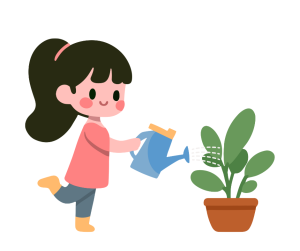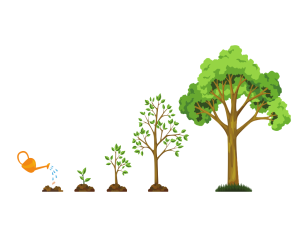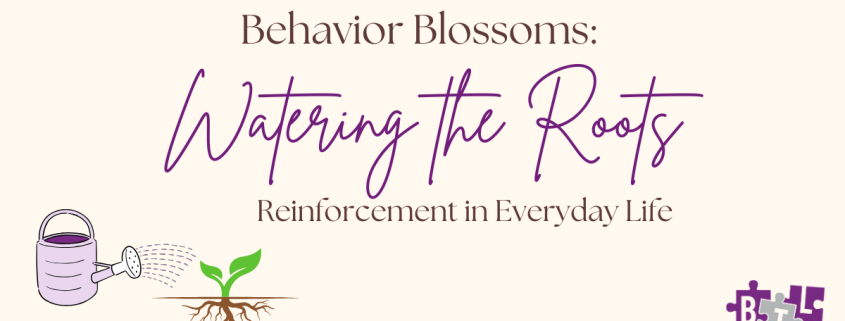Watering the Roots – Reinforcement in Everyday Life. 💦
There’s a saying “A little water goes a long way”. For seeds to grow, we know we have to provide them with plenty of water to get those roots to dig in deep. As the roots provide a stable groundwork for the seed to grow, reinforcement provides a consistent and strong motivator to keep behaviors growing. A little reinforcement added daily acts as the water to our seeds and goes a long way when constantly given.
Understanding Reinforcement
Reinforcement is much more than providing a reward or activity when something is finished. At its core, reinforcement means that the likelihood of a behavior occurring again increases. Though some may get this confused with “giving a child what they want” or “Bribery”, it’s truly not. Its focus is to teach that positive behaviors lead to positive outcomes. For example:
- When a child requests a break instead of yelling we reinforce with a break and verbal praise
- When teenagers make their beds, they are given money for a new game
- When a toddler uses the potty, we sign and dance providing lots of praise
All of these examples lead to an increase of the behavior occurring more because of reinforcement.
Daily Watering of the Roots 🪴
During ABA therapy, we are constantly “watering the roots” by praising and reinforcing all the behaviors we want to see more of. However, we know that just as we water our plants daily, we must also reinforce behaviors daily and across environments. That is, we encourage all participants of a child’s life (parents, teachers, babysitters, friends, etc.) to, in some way, help reinforce behaviors. The best thing about reinforcement is that we don’t need a water spigot to fill it up. We can provide reinforcement anywhere!
- While in the grocery store, reinforce your child for walking next to you with a special treat
- While at a ball game, surprise your child with their favorite toy from home after they’ve set in their seat for a while
- When your child says “I need help” give them verbal praise of “I love that you asked me for help! I can absolutely help you!”
- If your teen cleans their room by themselves, praise them and give them some extra TV time.
🏡 Incorporating Reinforcement at home:
- Catch the good! Even if things are going wrong, focus on what is going right. If your child is crying because they don’t want to leave but they put their shoes on, praise them for putting their shoes on!
- Timeliness is key! The quicker a reinforcer is given, the more affective it is. Try not to wait a long time before giving the reinforcer, instead give it as soon as the behavior is exhibited.
- Be consistent! Consistency is SO important when reinforcing a behavior. If we only reinforce a behavior 1-2 times when it happens, children will no longer be interested in doing the behavior. Instead try to reinforce every time. Remember verbal praise is the quickest reinforcement you can give.
- Provide a useful reinforcer! Figure out what your child enjoys and use that. If your child likes hugs and squeezes, reinforce with those. If you child is more into verbal praise, do that. Know what your child likes and use that reinforcer for them!
Remember that consistent, daily watering of the roots (or providing reinforcement) helps our learners acquire new skills, grow behaviors, and maintain behaviors they previously learned. Providing reinforcement as a parent not only allow you to help increase skills, but also encourages our learners to generalize skills to new environments. You are creating an environment where growth is both possible and sustainable!
Small Drops, Big Roots
 Think of reinforcement as the daily watering of a growing tree. The change might not be seen instantly, but over time, you’ll see the differences flourishing. The behaviors you are reinforcing today help create the roots of independence, confidence, and the ability to grow.
Think of reinforcement as the daily watering of a growing tree. The change might not be seen instantly, but over time, you’ll see the differences flourishing. The behaviors you are reinforcing today help create the roots of independence, confidence, and the ability to grow.
Let’s keep watering! 💦🌳
________________________________________________________________________________________
Be on the look out for our next post: Blooming Social Skills – Growing Connection Through Play. We will be focusing on building social interactions through play skills!


